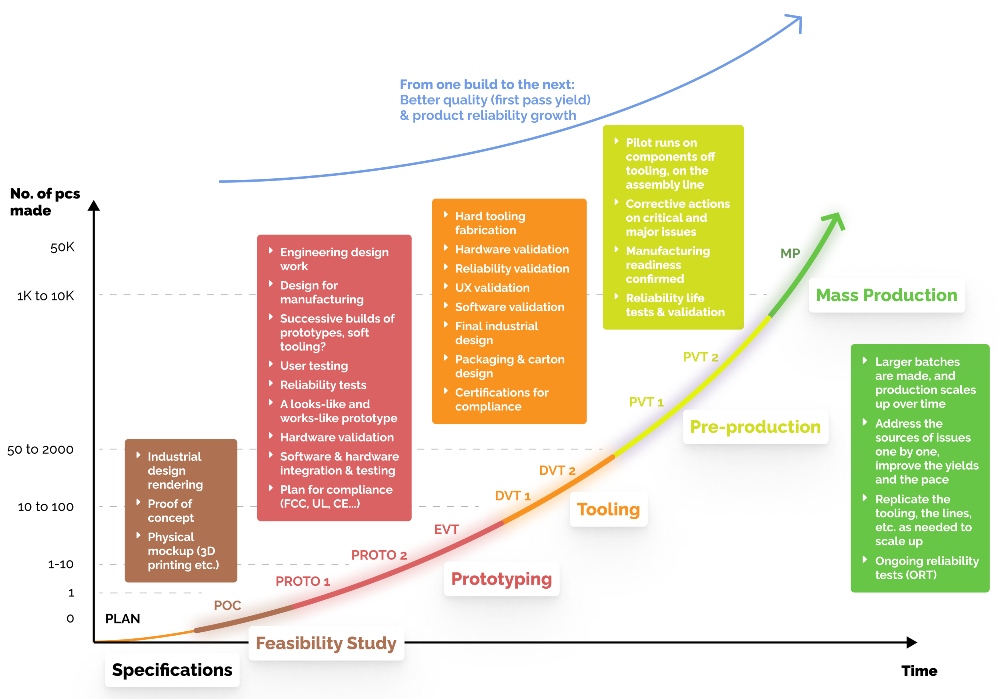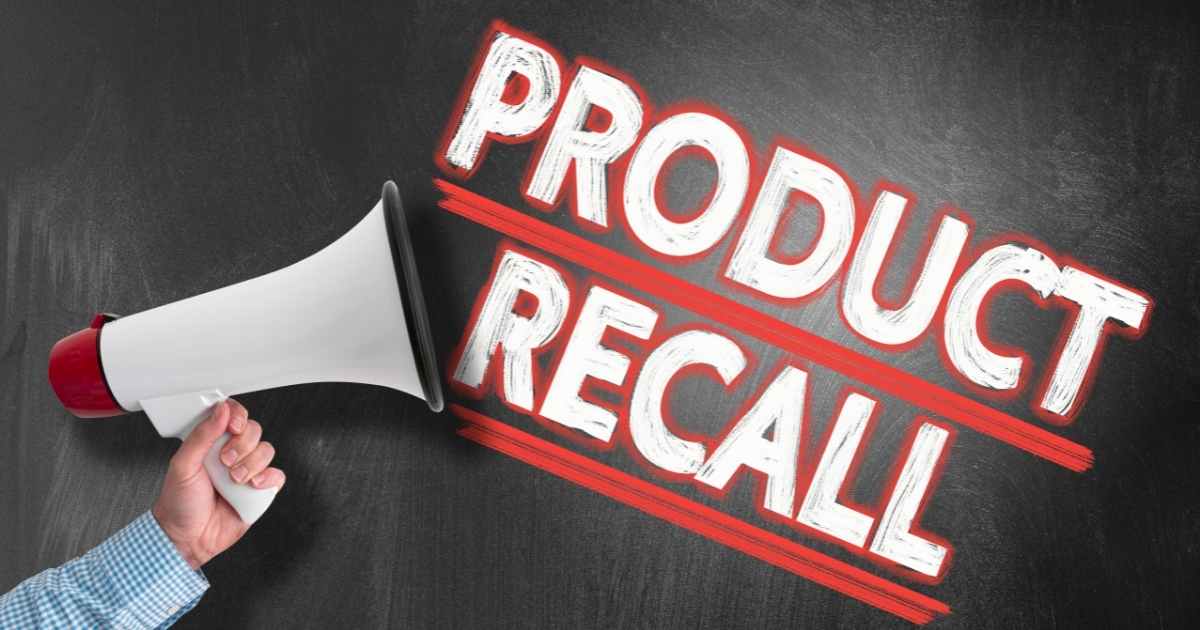Electronics giant Philips has been in the news due to a billion-dollar recall of medical devices (ventilators and sleep apnea machines) that have, unfortunately, resulted in deaths and injuries.
What could have caused such serious problems to make it into production and force such a huge recall, and what can we learn from this example?
According to the Sofeast group’s head of New Product Development, Andrew Amirnovin, issues like this often originate during the DVT stage of the NPI process when certain important activities are missed or skipped.
So in this post, he explains the activities and testing included in the NPI process, why they’re necessary for a secure product launch, and how DVT mistakes like missing an important test can spill over into PVT and then into mass production, too.
If you’re bringing a new product to market, this story demonstrates why following a detailed new product introduction process that leaves no stone unturned when trying to find potential risks is crucial for manufacturing safe, high-quality, and reliable products.
Listen to the post here:
🎧 How DVT & PVT Mistakes Result In Poor Quality Or Even Unsafe Products!
What do the acronyms EVT/DVT/PVT mean?
In the product development lifecycle or NPI process, we have phases including EVT (engineering verification/validation testing) is the prototyping stage where we figure out if we can make the product concept, DVT (design verification/validation testing) is where we test and confirm that the product works and is the right quality, compliant, safe, and reliable, and PVT (production verification/validation testing) where we work out and test the processes required to manufacture the product without issues; each with its own activities and milestones. (01:44)
The risks of rushing into production without completing DVT thoroughly.
Your return rate could be high, product recalls, and other trouble can occur. A lack of understanding of the critical testing and validation activities during NPI can lead to them being missed or skipped, and that increases risks. (04:42)
The giant Philips medical device recall in Summer ’22.
Millions of units of respiratory equipment are being recalled (ventilators and sleep apnea devices) due to issues with one of the components: foam used for sound-proofing. There were 48,000+ complaints, 44 people died, the company lost $30 billion in value, and the recall is costing just short of $1 billion (before litigation costs). It’s possible that errors were made during their DVT process that led to the issue with the foam (degradation). If it can happen to multinationals, it can happen to you! (07:43)
What happens during DVT to help us avoid product risks and recalls?
DVT is the final stage of design and development where we can test that everything is ready for production and can go into PVT (production readiness).
We finalize:
- Hardware – form, fit, function, specs, components, PCBs, testing, rework
- Software – lags hardware, find errors
- Quality and reliability – tests finalized, issues fixed
- QC inspections need to be written for inspections during production
- Compliance testing
Engineers will try to come up with use case scenarios to test for in order to avoid situations like the foam used in the Philips devices that degraded over time. It’s the quality and reliability engineers’ task to anticipate a problem like that and test it…perhaps this was missed in this case. (11:58)
You can see the full NPI process, including EVT, DVT, and PVT in this graphic:

Notice how many tasks take place during each phase. Missing these is a common mistake that leads to quality and reliability problems in mass-produced products.
The need for a solid reliability growth plan.
This starts from EVT and goes into DVT and is how you plan to test the device and create test cases that mimic real-world worst-case scenarios and are put together into the reliability test plan. The Philips recall is similar to the Samsung Galaxy Note 7 recall, and it was found that reliability testing was lacking on the battery resulting in fires and explosions. (16:39)
The temptation to rush into production and miss DVT steps.
Customers often push manufacturers to develop and produce products faster, especially individual entrepreneurs and some SMEs. The costs of testing can be off-putting, and smaller businesses with a lower budget can feel that skipping steps to save money and get to market faster is more cost-efficient and faster. This causes a domino effect of problems where you end up going into production with a product that may not be good quality, reliable, or even safe.
The fact that the foam degraded in the Philips devices causing safety issues after some time demonstrates the importance of doing the full range of reliability testing to iron out all reliability issues like this and that everything is locked in and the design is validated and verified. (19:44)
What a reliability engineer looks out for when devising the reliability test plan and use cases.
Users come up with all kinds of unexpected ways to incorrectly use products (some of which could result in damage or injury), so they will try to anticipate as many of these, even unlikely ones, as possible. Also, materials used in the product might react in unexpected ways over time, perhaps this is what occurred with the foam. Finally, if a new component or material is being used that’s never been tested and used in products before, it needs to be tested. So engineers will try to make products as reliable as possible and devise reasonable use cases. For example, it’s reasonable to expect a smartphone to survive a fall from a coffee table without breaking, but drops from 6 or 7 feet would be seen as ‘abuse’ and probably wouldn’t be tested for. The reliability testing needs to cover all the worst-case scenarios and you shouldn’t be tempted to skip those. (27:25)
What is PVT and why can it also cause a lot of product issues after production if steps are missed?
You set up a production line which will be the same as used for mass production and allows high-volume production with as few risks of problems as possible. The numerous assembly processes need to be devised and tested and a lot of work needs to be done to decide how to set everything up: operators needed, work instructions, line balancing, and more. You will also consider if mistake proofing, manual or automated assembly and testing are required and where. Later, deciding which QC inspections are required, too. Mistakes during production setup can cause problems with the product as it is simply not made correctly, including safety and quality issues, even when the product is perfect after DVT. Delays and rework are also a risk. The many activities during DVT and PVT are there to minimize the risks of mistakes that could lead to a product recall, as we saw in the new story. (31:42)
*****
What NPI process do you follow? Have you been affected by a product recall? Do you or your supplier undertake all of the tasks mentioned in each phase? Let me know by commenting, and contact me if you have any questions.
P.S. Related content on this topic…
- Philips parts ways with CEO in midst of massive recall
- Philips recalls ventilators, sleep apnea machines due to health risks
- Listen to The NPI Process: Trouble Awaits If You Skip Its Steps!
- Watch a number of videos we created about the NPI process
- You NEED to do product qualification BEFORE mass production!
- The NPI Process You Need To Follow For Successful Manufacturing
- Get help from Sofeast to devise and implement your reliability and durability testing and to help bring your new product to market using our tried-and-tested NPI process

